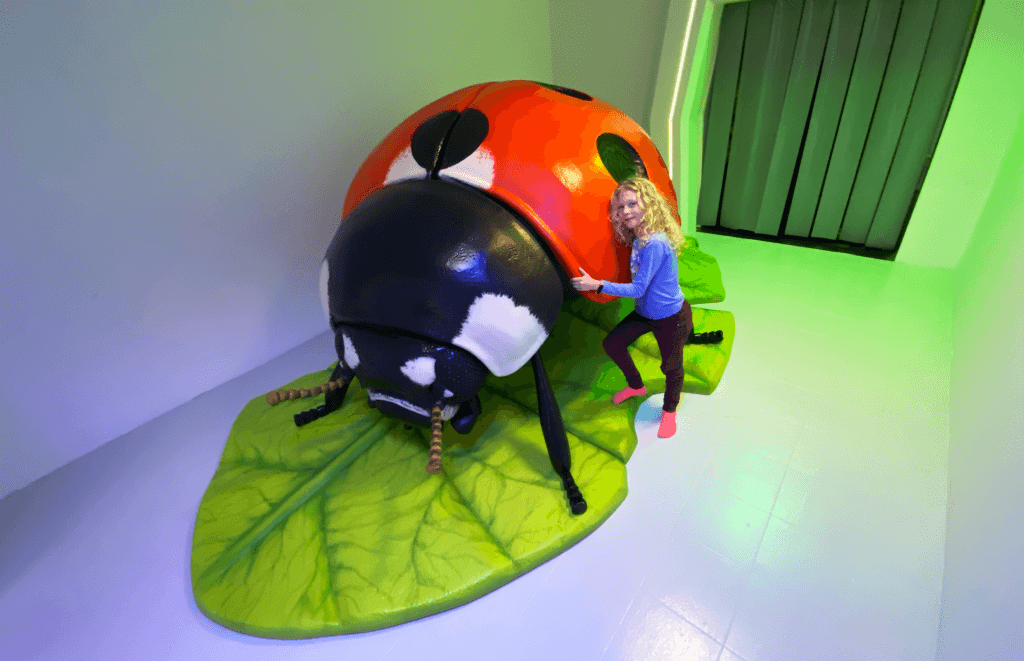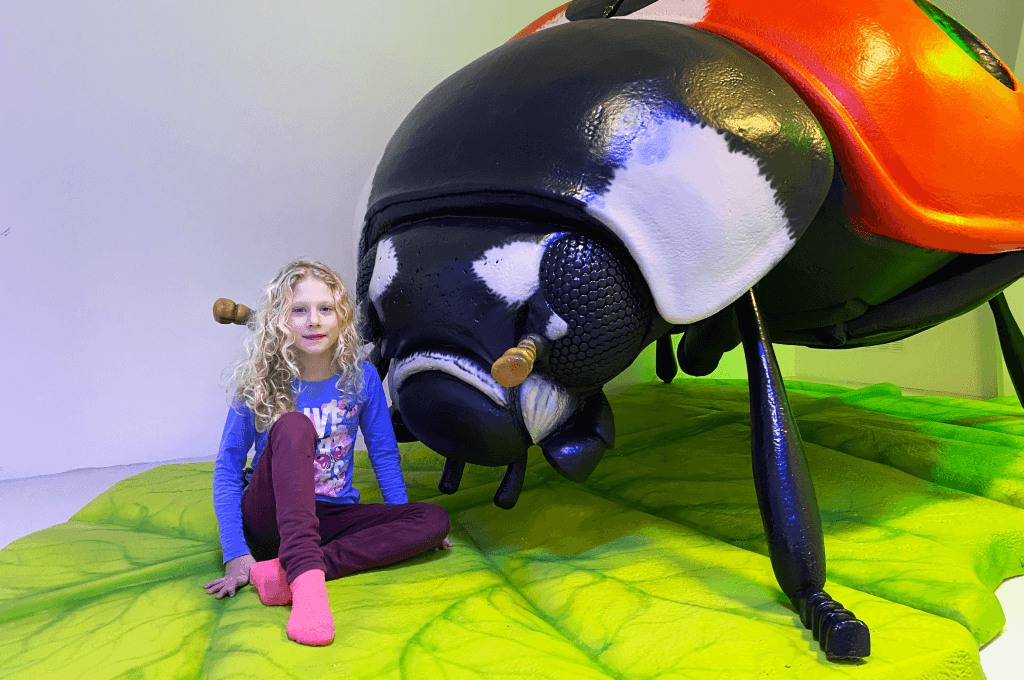Coccinella septempunctata
The seven-spotted ladybird and the two-spotted ladybird are equally widespread and common in nature. They differ from each other in size and number of dots on the rafters.
The adult ladybird measures 5 – 8 mm.

The ladybug falls to the ground at the sign of danger or disturbance and becomes dead. When touched and handled, it secretes a yellow liquid containing toxic alkaloids, thus protecting them from enemies.
Until the ladybird completes its development, it consumes about 600 aphids, there are 5,000 of them during their lifetime.

In the spring, females lay up to 400 eggs on the underside of leaves or in crevices. After about a week, blue-gray larvae with yellow spots hatch from them. They are predatory and feed exclusively on aphids.
Ladybugs go through four growing seasons. Two generations will be developed during the year, with the entire development taking 30 to 60 days.
A rapid increase in the number of ladybirds occurs when aphids multiply on plants.
Ladybug pupae resemble tapeworm larvae. However, they differ in that they do not have legs, are attached to the leaf and do not move. Therefore, be careful not to confuse them and destroy your helpers!
They are found on plants, trees, shrubs. ladybirds winter under stones or in buildings. They wake up on the first warm spring days.
You can’t lure them to the garden with flowers, but if you leave them a little fallen leaf under the bush in the winter, you will create a perfect wintering ground for them. The created shelter will serve similarly. If they survive the winter well, you will have allies in the fight against aphids in the spring.


